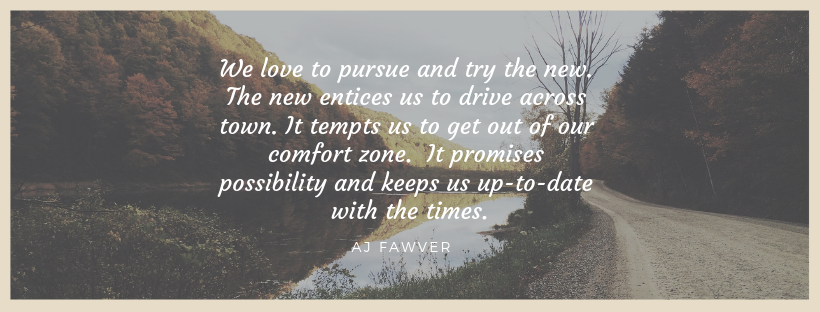
This is the monthly blog series by AJ Fawver, the Planning Director in Lubbock, Texas. She shares her perspectives on land use, planning, and community development in this series.
The celebration of new – new year, new beginnings, new technology, new ideas – is part of human nature. We love to pursue and try the new. The new entices us to drive across town. It tempts us to get out of our comfort zone. It promises possibility and keeps us up-to-date with the times.
The thing is, it also distracts us. It keeps us from seeing the unintended consequences of our choices. Think about the way cities have been functioning. Business tenants chase the newest shopping centers. Residents chase the newest housing developments. College students chase the newest entertainment venues. Couples chase the newest restaurants for date night, and families chase the newest recreational spots.
In the pursuit of building and shaping cities, our work is not just to watch and make possible all of this newness. It is also to help our cities realize that, while new feels like progress, it isn’t that simple. New inevitably becomes old, and there will always be something new.
As a general rule, people are fickle about where their attention lies. The biggest realization we tend to miss is this: we cannot afford all this new. New is costing us an exorbitant amount of money and resources.
Think about this. Those aging corridors traffic demand has largely abandoned in pursuit of a faster way to get where all the new is concentrated…were once new.
The neighborhoods of small, neatly arranged starter homes from mid-century…were once new. The seventies’ style shopping centers and small corner gas stations…were once new.
And yet, they remain, dependent on cities for their maintenance of the infrastructure necessary to serve them. The ultimate cost is exponential as new utilities and streets are hurled out into the outskirts of cities, just ahead of new development hungry to use it.
The assumed causation of all this new is growth, the perception that a community is growing in a direction because the older parts of that community are already occupied.
It is hard not to think cities are growing when we see the new emerging around its fringes and the footprint grows further outward.
Is that really what is happening? Not necessarily. Examples abound of communities which look much different than your last visit there – but whose population growth rates are flat or show very slight growth at most. The impression of growth does not necessarily equal more residents in your city.
While many metropolitan parts of the nation are experiencing the phenomenon of residents fleeing to “secondary” cities in pursuit of affordability and quality of life, others are building at a blistering rate for growth which in actuality, may not be coming in the near future.
Hundreds of new rooftops and businesses to serve them are not representing growth in those cases, they are representing residents upgrading to larger, newer housing and trading their neighborhood for a newly-constructed one. In some instances, they are focused on relocating in a different school district.
Or, perhaps an easy commute to work is fueling their desire. Either way, it isn’t growth; it is a redistribution of existing residents.
Of one thing we can be sure; understanding that motivation, those needs and desires, is key.
Planning for thousands of new residents, and creating places for them to live, work, and play, is one thing. Understanding how a massive shift of the existing population from older segments of the city to the newer, is a very different thing.
Planning and shaping cities that stand the test of time – and can either afford their sprawling growth or can come to terms with a more manageable way of redistributing all those new things in a way that brings attention back to established areas – requires us to figure it out.
